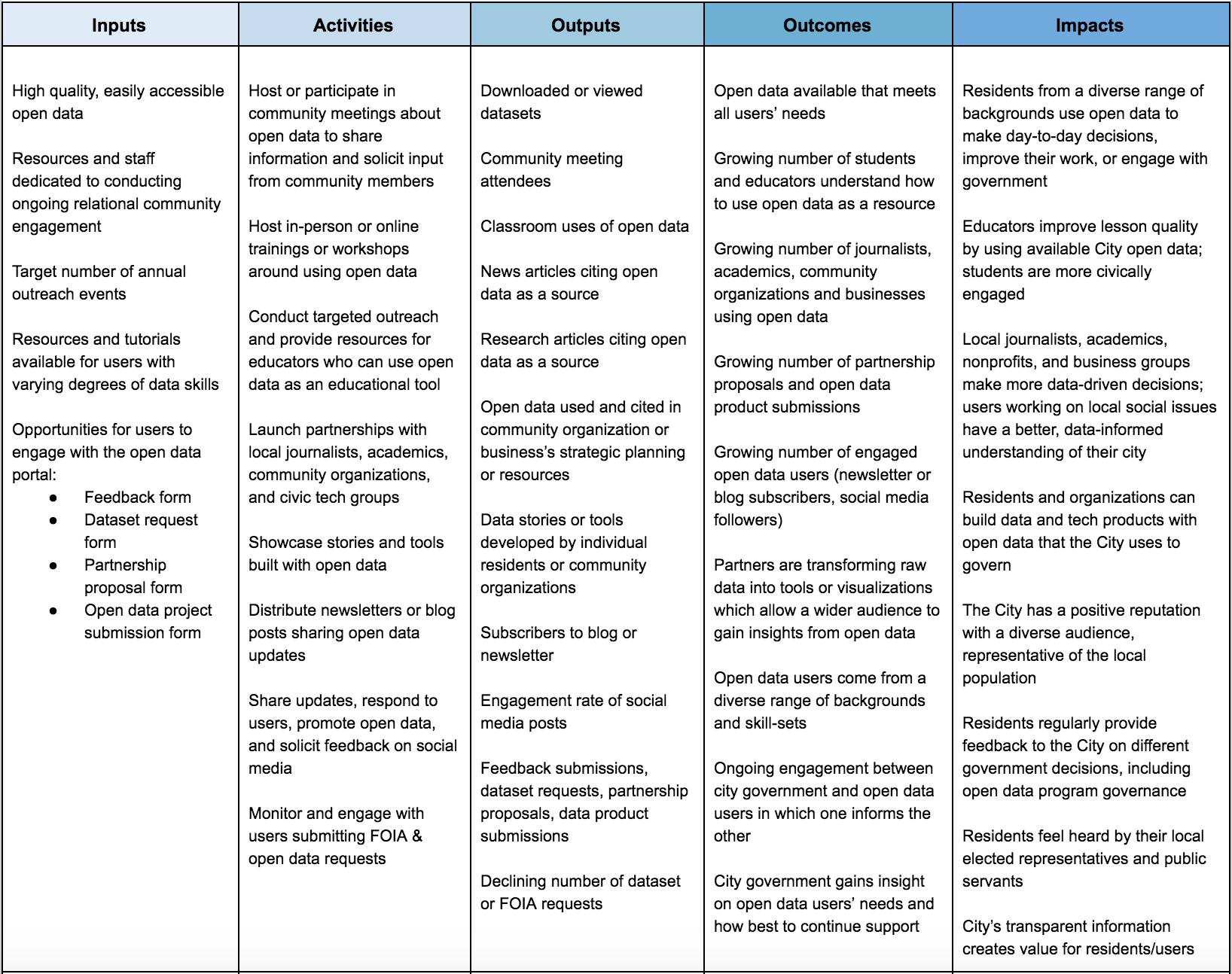Community Engagement Impact Framework
Learn how to measure the outcomes and impacts of efforts to engage the community around open data
Problem? Cities struggle to track their engagement efforts or measure how community use of open data can improve relationships between residents and government.
Solution/Intervention? Cities proactively conduct and track community engagement efforts that lead to quantifiable outputs and ongoing relational engagement between City and residents.
Expected Impact? Communities are more civically engaged, using open data as a means to understand local issues, advocate and hold local governments accountable.

View a larger version of this table
1. Inputs
Facilitated to implement the intervention and are put in place to enable activities
- High-quality, easily accessible open data
- Resources and staff dedicated to conducting ongoing relational community engagement
- Target number of annual outreach events
- Resources and tutorials available for users with varying degrees of data skills
- Opportunities for users to engage with the open data portal:
- Feedback form
- Dataset request form
- Partnership proposal form
- Open data project submission form
Associated metrics or indicators
- Number of of target outreach efforts
- Number of staff conducting outreach
- Community engagement budget
Metric monitoring techniques
- Internal tracking
2. Activities
Achieve the objectives of the intervention
- Host or participate in community meetings about open data to share information and solicit input from community members
- Host in-person or online trainings or workshops around using open data
- Conduct targeted outreach and provide resources for educators who can use open data as an educational tool
- Launch partnerships with local journalists, academics, community organizations, and civic tech groups
- Showcase stories and tools built with open data
- Distribute newsletters or blog posts sharing open data updates
- Share updates, respond to users, promote open data, and solicit feedback on social media
- Monitor and engage with users submitting FOIA & open data requests
Associated metrics or indicators
- Number of outreach initiatives completed
- Number of community meetings
- Number of partnerships formed
- Number of newsletters or blog posts distributed
Metric monitoring techniques
- Internal tracking
3. Outputs
Short-term products/services that result from the intervention
- Downloaded or viewed datasets
- Community meeting attendees
- Classroom uses of open data
- News articles citing open data as a source
- Research articles citing open data as a source
- Open data used and cited in community organization or business’s strategic planning or resources
- Data stories or tools developed by individual residents or community organizations
- Subscribers to blog or newsletter
- Engagement rate of social media posts
- Feedback submissions, dataset requests, partnership proposals, data product submissions
- Declining number of dataset or FOIA requests
Associated metrics or indicators
- Number of data portal unique visitors
- Number of dataset downloads
- Number of classroom uses
- Number of articles citing open data
- Number of research citing open data
- Number of first-time meeting attendees
- Number of repeat meeting attendees
- Number of community organizations using open data
- Number of civic hacking events using open data
Metric monitoring techniques
- Website analytics
- Google alerts (tracks new online mentions of open data portal)
- Surveys
4. Outcomes
Changes in knowledge, attitudes, behaviors in short-medium term
- Open data available that meets all users’ needs
- Growing number of students and educators understand how to use open data as a resource
- Growing number of journalists, academics, community organizations and businesses using open data
- Growing number of partnership proposals and open data product submissions
- Growing number of engaged open data users (newsletter or blog subscribers, social media followers)
- Open data users come from a diverse range of backgrounds and skill-sets
- Ongoing engagement between city government and open data users in which one informs the other
- City government gains insight on open data users’ needs and how best to continue support
Associated metrics or indicators
- % changes in all outputs over time
- Background & demographics of engaged open data users
Metric monitoring techniques
- Track output metrics over time
- Survey
5. Impacts
Actual or intended changes in higher-level strategic goals
- Residents from a diverse range of backgrounds use open data to make day-to-day decisions, improve their work, or engage with government
- Educators improve lesson quality by using available City open data; students are more civically engaged
- Local journalists, academics, nonprofits, and business groups make more data-driven decisions; users working on local social issues have a better, data-informed understanding of their city
- Residents and organizations can build data and tech products with open data that the City uses to govern
- The City has a positive reputation with a diverse audience, representative of the local population
- Residents regularly provide feedback to the City on different government decisions, including open data program governance
- Residents feel heard by their local elected representatives and public servants
- City’s transparent information creates value for residents/users
Associated metrics or indicators
- Perception polls
- Increase in attendance at decision-making meetings
- % of workforce with data skills
Metric monitoring techniques
- Interviews
- Surveys
- Focus groups

